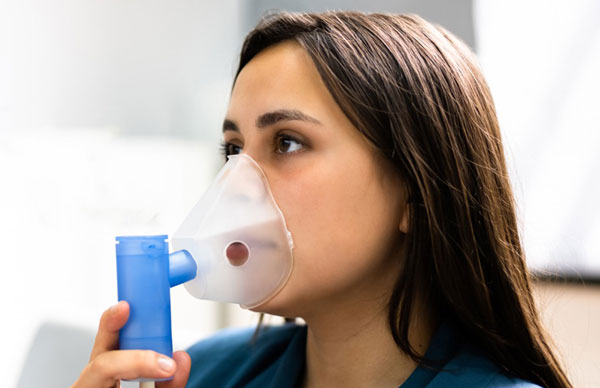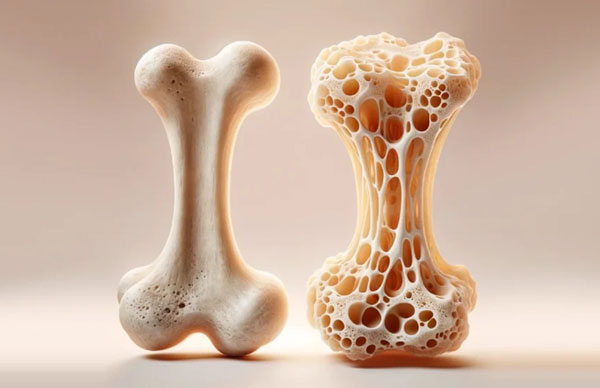Understanding Pulmonary Valve Disease: Causes, Symptoms and Treatment Options

Pulmonary valve disease is a condition affecting the pulmonary valve of the heart, which plays a crucial role in regulating blood flow from the right ventricle to the lungs. This disease can significantly impact a person’s health, making understanding its causes, symptoms and treatment options essential. You can connect with Neotia Getwel Multispecialty Hospital for the best medical assistance and 24/7 emergency care.
What is Pulmonary Valve Disease?
The pulmonary valve is one of four valves in the heart, each of which ensures that blood flows in the right direction. The pulmonary valve specifically controls blood flow from the right ventricle to the pulmonary arteries, which carry blood to the lungs for oxygenation. When this valve does not function properly, it can lead to two primary types of pulmonary valve disease: pulmonary valve stenosis and pulmonary valve regurgitation.
Pulmonary Valve Stenosis: This condition occurs when the pulmonary valve is too narrow, restricting blood flow from the right ventricle to the lungs. The heart must work harder to pump blood through the narrowed valve, which can lead to an enlarged right ventricle and eventually heart failure if left untreated.
Pulmonary Valve Regurgitation: In this condition, the pulmonary valve does not close properly, causing blood to leak back into the right ventricle after it has been pumped into the pulmonary artery. This backflow of blood forces the heart to work harder to pump the required amount of blood to the lungs, potentially leading to an enlarged right ventricle and other complications over time.
Causes of Pulmonary Valve Disease
Pulmonary valve disease can arise from various causes, each contributing to the malfunctioning of the valve. Some of the common causes include:
Congenital Heart Defects: Many cases of pulmonary valve disease are present at birth. Congenital heart defects can lead to a malformed pulmonary valve, such as a valve with fewer than the normal three leaflets (cusps) or one that is abnormally shaped. These defects can cause the valve to be either too narrow (stenotic) or leaky (regurgitant).
Rheumatic Fever: Rheumatic fever is a complication of untreated strep throat or scarlet fever, caused by the streptococcus bacteria. This condition can cause inflammation in various parts of the body, including the heart, leading to long-term damage to the heart valves, including the pulmonary valve. Although less common today due to the widespread use of antibiotics, rheumatic fever remains a significant cause of valve disease in some parts of the world.
Endocarditis: Endocarditis is an infection of the inner lining of the heart chambers and valves. This infection can be caused by bacteria or other germs that enter the bloodstream and lodge in the heart. When the pulmonary valve is affected, it can become damaged, leading to either stenosis or regurgitation.
Carcinoid Syndrome: This is a rare condition associated with carcinoid tumours, which can secrete substances that cause damage to the heart valves. When these substances reach the heart, they can cause fibrosis and thickening of the pulmonary valve, leading to stenosis or regurgitation.
Pulmonary Hypertension: Pulmonary hypertension is a condition characterized by high blood pressure in the arteries of the lungs. This increased pressure can strain the pulmonary valve, eventually leading to its dysfunction.
Other Causes: Other potential causes of pulmonary valve disease include ageing, which can lead to valve degeneration, as well as certain medications or radiation therapy that can damage the heart valves.
Symptoms of Pulmonary Valve Disease
The symptoms of pulmonary valve disease can vary widely depending on the severity of the condition. In some cases, particularly with mild forms of the disease, individuals may not experience any symptoms at all. However, as the disease progresses, the following symptoms may become evident:
Shortness of Breath: This is one of the most common symptoms of pulmonary valve disease. Patients may find it difficult to breathe, especially during physical activities or exercise. This occurs because the heart struggles to pump enough blood through the narrowed or leaky valve, leading to insufficient oxygenation.
Fatigue: People with pulmonary valve disease often feel unusually tired, even after light activities. The heart’s inability to pump blood efficiently means that less oxygen-rich blood reaches the muscles and other tissues, leading to fatigue.
Chest Pain: Some individuals with pulmonary valve disease may experience chest pain or discomfort, particularly during exertion. This can be due to the increased strain on the heart as it tries to compensate for the faulty valve.
Fainting or Dizziness: In more severe cases, patients may experience fainting (syncope) or dizziness, especially during physical activity. This is because the heart may not be able to pump enough blood to meet the body’s needs, leading to a temporary drop in blood pressure.
Swelling: Swelling or edema, in the legs, ankles, or abdomen can occur as a result of fluid retention. This happens because the heart’s reduced pumping ability causes blood to back up in the veins, leading to fluid buildup in the body’s tissues.
Heart Murmur: A heart murmur, detected by a doctor through a stethoscope, is often one of the first signs of pulmonary valve disease. A murmur is an abnormal sound made by turbulent blood flow through a narrowed or leaky valve.
Treatment Options for Pulmonary Valve Disease
The treatment for pulmonary valve disease depends on the severity of the condition and the specific symptoms experienced by the patient. The goal of treatment is to relieve symptoms, improve heart function and prevent further complications. Treatment options include:
Monitoring and Lifestyle Changes: In cases of mild pulmonary valve disease, regular monitoring by a cardiologist may be all that is needed. Patients may also be advised to make lifestyle changes, such as quitting smoking, eating a heart-healthy diet and managing other risk factors like high blood pressure and cholesterol.
Medication: Medications may be prescribed to manage symptoms or underlying conditions contributing to pulmonary valve disease. For example, diuretics can help reduce fluid retention, while beta-blockers or ACE inhibitors can lower blood pressure and reduce the heart’s workload.
Balloon Valvuloplasty: This minimally invasive procedure is commonly used to treat pulmonary valve stenosis. During balloon valvuloplasty, a catheter with a small balloon at the tip is inserted into a blood vessel and guided to the narrowed pulmonary valve. The balloon is then inflated to widen the valve opening, improving blood flow.
Valve Repair: In some cases, the pulmonary valve can be surgically repaired. This may involve reshaping the valve leaflets, removing excess tissue, or patching up tears. Valve repair is often preferred over replacement because it preserves the patient’s own valve, reducing the need for long-term medication.
Valve Replacement: If the pulmonary valve is severely damaged and cannot be repaired, valve replacement may be necessary. The damaged valve can be replaced with a mechanical valve, made of durable materials, or a biological valve, made from animal tissue or a donated human valve. Each type of valve has its advantages and disadvantages and the choice depends on the patient’s age, lifestyle and overall health.
Transcatheter Pulmonary Valve Replacement (TPVR): TPVR is a less invasive alternative to open-heart surgery for valve replacement. This procedure delivers a new valve to the heart via a catheter inserted through a blood vessel. This option is often used for patients who are at high risk for traditional surgery.
Conclusion
Pulmonary valve disease is a serious condition that can lead to significant health problems if left untreated. Understanding the causes, symptoms and treatment options is essential for managing the disease effectively. Early diagnosis and appropriate treatment can help improve the quality of life and prevent complications. If you or a loved one experience symptoms such as shortness of breath, fatigue or chest pain, it is important to seek medical advice promptly. With proper care, many people with pulmonary valve disease can lead healthy, fulfilling lives.
Disclaimer
Though all attempts are made to provide correct information on the subject, inadvertent & typographical errors arising out of manual intervention cannot be ruled out. Any such discrepancies should be brought to the blogger's notice for correction.













